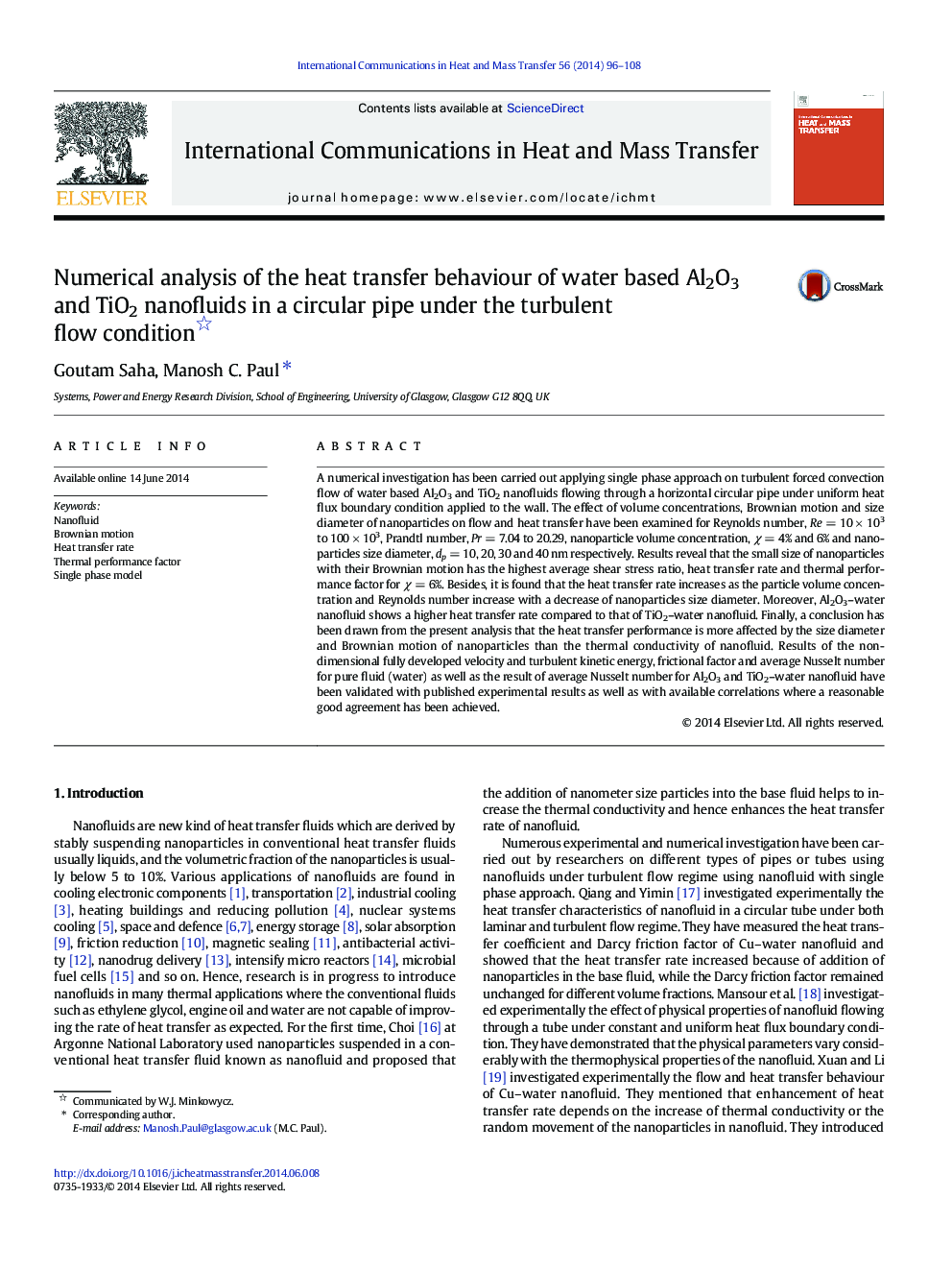| Article ID | Journal | Published Year | Pages | File Type |
|---|---|---|---|---|
| 653234 | International Communications in Heat and Mass Transfer | 2014 | 13 Pages |
Abstract
A numerical investigation has been carried out applying single phase approach on turbulent forced convection flow of water based Al2O3 and TiO2 nanofluids flowing through a horizontal circular pipe under uniform heat flux boundary condition applied to the wall. The effect of volume concentrations, Brownian motion and size diameter of nanoparticles on flow and heat transfer have been examined for Reynolds number, Re = 10 Ã 103 to 100 Ã 103, Prandtl number, Pr = 7.04 to 20.29, nanoparticle volume concentration, Ï = 4% and 6% and nanoparticles size diameter, dp = 10, 20, 30 and 40 nm respectively. Results reveal that the small size of nanoparticles with their Brownian motion has the highest average shear stress ratio, heat transfer rate and thermal performance factor for Ï = 6%. Besides, it is found that the heat transfer rate increases as the particle volume concentration and Reynolds number increase with a decrease of nanoparticles size diameter. Moreover, Al2O3-water nanofluid shows a higher heat transfer rate compared to that of TiO2-water nanofluid. Finally, a conclusion has been drawn from the present analysis that the heat transfer performance is more affected by the size diameter and Brownian motion of nanoparticles than the thermal conductivity of nanofluid. Results of the non-dimensional fully developed velocity and turbulent kinetic energy, frictional factor and average Nusselt number for pure fluid (water) as well as the result of average Nusselt number for Al2O3 and TiO2-water nanofluid have been validated with published experimental results as well as with available correlations where a reasonable good agreement has been achieved.
Related Topics
Physical Sciences and Engineering
Chemical Engineering
Fluid Flow and Transfer Processes
Authors
Goutam Saha, Manosh C. Paul,
